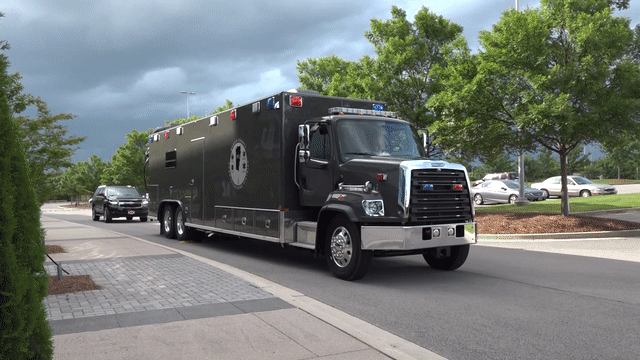Cities across the U.S. are investing in mobile command centers. Let’s explore why, and how they can help cities be more resilient in times of crisis.
Why the need for mobile command centers?
A 911 center under water cannot function. That’s one of the many unexpected and painful lessons from Hurricane Katrina in 2005. The storm’s devastating force obliterated entire towns and effectively destroyed the Gulf Coast’s communications infrastructure.
Floodwaters forced 120 operators at New Orleans 911 to abandon police headquarters, and the main fire station was also vacated for safety. Many calls were rerouted elsewhere, while others were never answered.
Following the storm, the U.S. Department of Homeland Security allocated grant funding for the development and construction of mobile emergency units that could be quickly transported to large-scale emergencies. Large, local public safety agencies sought funding for similar vehicles.
Fifteen years later, technology has evolved, and public safety agencies of all sizes have recognized the value of a mobile command center. As a result, many agencies are highlighting their use of multifunctional vehicles.
Common features & capabilities of a mobile command center
As implied by its name, a mobile command center is basically a PSAP on wheels. This multifunctional vehicle houses many public safety components and can be shared by several agencies. Most range in length from 30-45 feet, but some are much larger.
Washington, D.C.’s Office of Unified Communications acquired a massive, 80-foot long, two-story vehicle in 2017. Tactical Homeland Operations Response, or “T.H.O.R.,” is called into service in crisis situations and special events.
Mobile command centers often have similar features. Common layouts include:
-
- Four-to-eight-person dispatch area
- Conference area
- Small kitchenette
- Multiple screens and smartboards for monitoring news reports, cameras, and live footage from helicopters, drones, or other sources, such as amateur radios
Inside the center, representatives of multiple agencies, such as police, fire, and EMS, share information, formulate plans, and provide valuable backup to their situational counterparts.
Integrated technologies within mobile command centers
Mobile command center capabilities grow at the pace of new technology. Computer-aided dispatch (CAD) systems interface with an agency’s main 911 center; and increasingly, CAD is interoperable with neighboring agencies. Mobile technologies supply real-time data to incident command, which aids decision-making.
Some of the newest vehicles are being outfitted with solar power capabilities. Others have a drone technology interface, so they can downlink live drone video, analyze it, and send to headquarters or other partnering agencies.
Geofencing is another relatively new capability leveraged by mobile command centers. In incidents confined to a specific geographical area, such as a city’s downtown, the mobile command center can leverage geofencing so all 911 calls within the specified area go directly to the mobile PSAP rather than the main operations center. This allows more rapid assessment and deployment of first responders to the incident.
Mobile County, Alabama, plans to use this capability to enhance public safety during its annual Mardi Gras celebrations, which last nearly three weeks and attract close to one million revelers.
How mobile command centers enable regional collaboration
Multi-agency collaboration is one of the biggest benefits of a mobile command center.
In 2018, 21 major wildfires burned more than 245,000 acres of Northern California. The fire destroyed 8,900 structures and killed 42 people. More than two dozen dispatchers from command centers around California traveled to work in the Cal Fire mobile command center and assist with incident response.
The ability to provide mutual aid to neighboring communities is a selling point for agencies requesting funding for a mobile command center.
The future
As the world changes, policing and first response also evolve. The COVID-19 pandemic of 2020 transformed workflows for public safety agencies of all disciplines. Agencies found value in backup workstations for call-takers and dispatchers offered by a mobile command center. As public safety technologies continue to improve mobile capabilities, mobile command centers are likely to become more prevalent.
Many law enforcement agencies rely on Hexagon’s computer-aided dispatch, analytics, and mobile solutions. Watch the video above to learn how Mobile County, Alabama, Emergency Management Agency deployed a mobile command center using Hexagon technologies.















